The morning was overcast after a night of thunderstorms, but we were determined to spend as many daylight hours as possible on Sao Beach, the white sand haven rumored to be among the most beautiful spots on Phu Quoc, an island 30 miles off the west coast of Vietnam.
It was my first time operating a motorcycle, but I handled the Honda with the confidence of a veteran, zipping alongside my boyfriend, Caleb, through rain-filled potholes on red clay streets. The morning was overcast after a night of thunderstorms, but we were determined to spend as many daylight hours as possible on Sao Beach, the white sand haven rumored to be among the most beautiful spots on
Phu Quoc, an island 30 miles off the west coast of Vietnam.
It was somewhere near a street market selling the island’s signature products (black pepper, fish sauce and saltwater pearls) that we took a wrong turn and ended up looping back toward Phu Quoc National Park, whose forests, mountains and beaches cover roughly 70 percent of the 222-square-mile island. There, on a rough stretch of highway, the Honda slid from beneath me and I ended up sprawled on the side of the road with a deep gash in my knee.

I shakily drove 16 miles back to the hospital in the town of Duong Dong, where I received three stitches. Determined to stay on course for the day, I then climbed back onto the Honda. I simply could not allow myself to be laid up on Phu Quoc, where the ocean is myriad shades of green, and densely forested mountains slope down to white sand beaches.

Caleb and I had arrived from
Ho Chi Minh City the day before, on an hourlong flight packed with tourists, most of them looking for tranquillity after whirlwind tours of Vietnam. The single-runway airport where we landed will soon be dwarfed by an international terminal being built on the east side of the island. When it is finished, Phu Quoc will be flooded with visitors eager for a taste of what some say is the next Phuket.
But for now, with over 50 hotels and a plethora of spas, markets, beachside bars and restaurants, Phu Quoc has all the creature comforts of a luxurious getaway at relatively inexpensive prices. Most of the resorts are on Long Beach and Ong Lang Beach on the island’s west side, which is indented with hidden coves buffered by black volcanic rock. Offshore, coral reefs sheltered by sandbars await divers and snorkelers.
Phu Quoc has only recently become a tourist destination. A sleepy outpost of fishing villages until the end of the 20th century, the island was the subject of numerous border disputes between Cambodia and Vietnam. During the Vietnam War, Coconut Tree Prison was used by the United States as a detention camp for North Vietnamese soldiers. Today, the penitentiary is a historical site and all international conflicts are over. The island’s hopes rest with tourism: By 2020, Phu Quoc, population 90,000, is expected to attract three million visitors a year.

The island, one hopes, won’t sacrifice its unexpected charms. Any turn on a road can lead to an encounter with tradition: a group of girls dressed in white school gowns, riding their bikes home for lunch; a cemetery full of tiny pagodas, partly hidden in fields of golden grass; fishermen lounging beneath palm trees beside their turquoise and red boats.
The doctor at Duong Dong allowed me to ride my motorcycle, but he forbade me from swimming. Fortunately, I had spent the previous day exploring the waters off the northern tip of the island on a trip arranged by the concierge at Mango Bay, an eco-resort near Ong Lang Beach. For hours, Caleb and I had snorkeled above coral reefs teeming with rainbow fish, snappers and sea urchins, breaking only to have lunch beneath the canopied shelter of a fishing boat that Conrad, our young South African guide, had anchored off a deserted strip of sand.
“The Russians are coming,” Conrad had told us, as we lingered over grilled squid, spring rolls, shredded mango salad and Phu Quoc’s signature fish sauce, which is the island’s main export. “And money talks,” he said, referring to a rumored new port that would accommodate the mega-yachts of Russian oligarchs. In Phu Quoc’s schools, he said, the first language children learn is Vietnamese, the second is English and the third is Russian, a reflection of the increasing number of well-off Slavic tourists drawn to the island.
As we ate, we watched a group of Vietnamese in neon-orange life jackets bob away from the boat they had just arrived on, only to be retrieved, screaming with laughter, by a dinghy. Eventually, a few brave pioneers from the group paddled to the shallows of the reef and stood on the coral, watching us impassively. “Not a single one of them can swim, not even the crew,” Conrad said.
At the time, the observation was amusing. Little did I know that the next day, I would be similarly handicapped.
Despite the doctor’s warning not to swim, Caleb and I were determined to get to Sao Beach, even if it meant just sitting in the sand. I tremulously drove my motorbike, with its newly smashed rearview mirror, a bit unnerved by the motorists honking their horns and zooming past me.
As a respite, we stopped for a short hike up Tranh stream, which ran perpendicular to the highway, to reach a waterfall. My knee felt stiff, but with Caleb’s help, I steadily made my way up the slope. On a rock near the waterfall, we sat for a bit, entertained by the young Vietnamese men who were celebrating Sunday by standing beneath the rush of water in their underwear.
Back on our bikes, we rode across the sparsely populated hills in the center of the island, past pepper farms and billboards advertising future shopping malls and resorts.
Eventually, we reached a town filled with restaurants and outdoor markets, and turned left at the sign for Sao Beach. On pockmarked roads, we followed a stream of traffic that steadily thinned as we got closer to the ocean.
Sao Beach is no secret to tourists on the island for
Vietnam tourism. What makes it such a treasure is its relative inaccessibility. On the opposite coast from the rapidly developing Long Beach, Sao Beach has yet to be conquered by resorts. To get there, we had traveled 40 miles over unfinished roads, and we had done so at the expense of my knee.

Finally, we pulled our motorbikes into an empty courtyard at the beach’s entrance. By that time, our only companion was a gray-bearded dog that followed us as we made our way through the dusty restaurant that blocked our initial view of the ocean.
We emerged onto a cluster of tables sheltered by umbrellas of woven palm fronds. All sounds disappeared except for the lapping of the waves.
To our left, a young woman sat alone on a sandbar a hundred feet out in the water, engrossed in a book. To the right, a Vietnamese family dressed in bright T-shirts greeted fishermen tugging a boat onto the shore. White sand stretched out in all directions, seeming to meld with the cloudy sky in gradients of soft milky shades of ivory and cream. Occasionally the ethereal glow was broken by the silhouettes of solitary bathers in the shallow waters.
This was the paradise that Phu Quoc had promised us, and it delivered. Caleb and I kicked off our shoes and dropped our helmets next to a palm tree. Beachcombers for the day, we made our way across the sand until our path was blocked by mounds of rocks. The next beach on the coastline, entirely secluded, was just beyond our reach.
We would have braved the slippery climb had my knee not been throbbing. Instead, we contented ourselves with the sand that was already beneath our feet, and it was more than enough.
IF YOU GO GETTING THEREThe fastest way to Phu Quoc is to fly from Ho Chi Minh City. Vietnam Airlines (vietnamairlines.com) offers one-hour flights up to eight times a day. Once there, the easiest way to get around is on a motorbike (around $8 a day).
WHERE TO EATThe food almost anywhere in Phu Quoc is great, but the best bet for an outstanding meal is the Night Market in Duong Dong (open nightly, 6 p.m. to midnight), which has dozens of stalls serving fresh seafood, juices, beer and traditional Vietnamese fare. For less than $20, you can have a feast at one of the ramshackle restaurants that line the stalls.
WHERE TO STAYLong Beach is the most densely populated strip on Phu Quoc, boasting the luxurious La Veranda (84-773-982-988; laverandaresort.com), a resort in the style of a seaside French mansion, with doubles starting at $225 during the high season.
The eco-lodges around Ong Lang Beach in the north are quiet, less expensive alternatives to the more-traditional resorts in the south.
Mango Bay (84-773-981-693; mangobayphuquoc.com) has bungalows with ocean views from $100 a night, and there is Freedomland (84-226-586-802; freedomlandphuquoc.com), which has private huts, starting at $35 a night, that are a 12-minute walk from the beach.
WHAT TO DOWater activities abound, including snorkeling and diving in the reefs around Phu Quoc’s 22 satellite islands. Most of the resorts have day trips, but Rainbow Divers (84-913-400-964; divevietnam.com) also offers tours starting at $25.
For gifts, Phu Quoc Pearls (treasuresfromthedeep.com) harvests over a billion oysters on an isolated stretch of Long Beach, and it houses a boutique selling pearl jewelry ranging from $5 to $40,000.




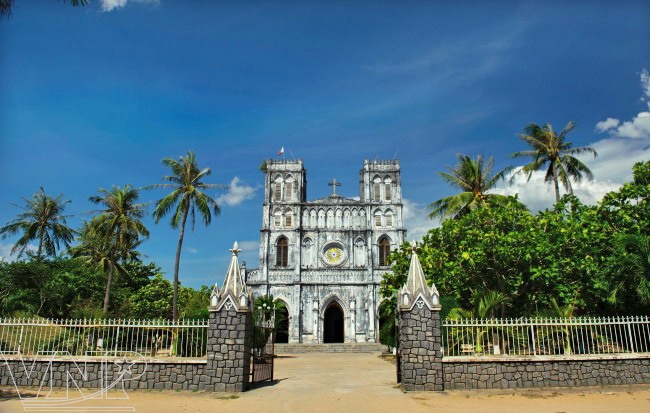
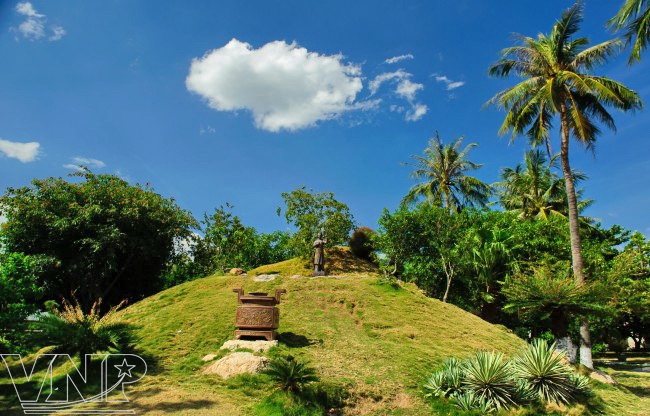
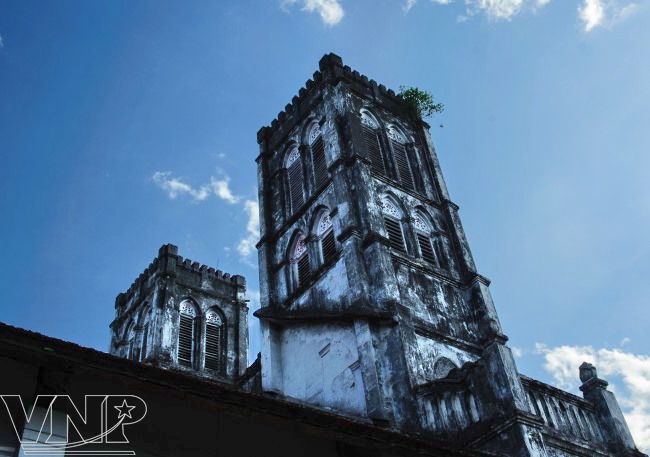
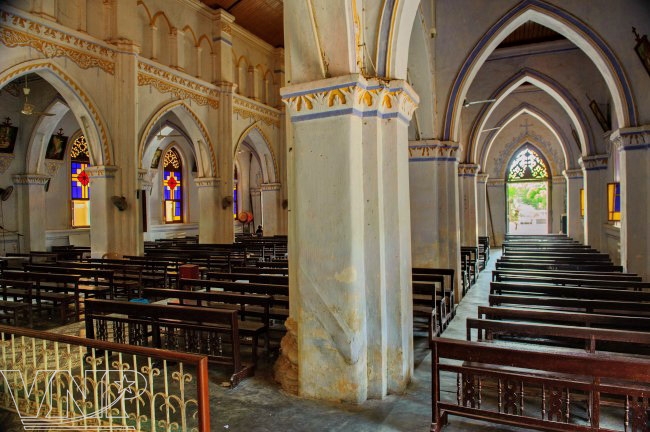 The two sides of the church’s lobby were designed in an eye-catching pyramid style. The chancel, with colorful windows, yellow-brown walls and a wooden ceiling on which ancient lights are hung, leaves a strong impression on
The two sides of the church’s lobby were designed in an eye-catching pyramid style. The chancel, with colorful windows, yellow-brown walls and a wooden ceiling on which ancient lights are hung, leaves a strong impression on 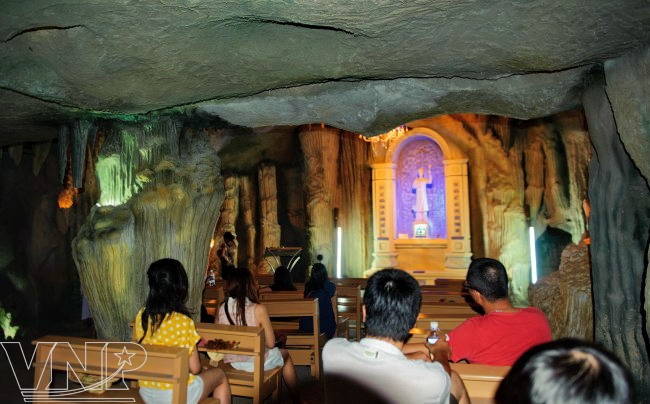
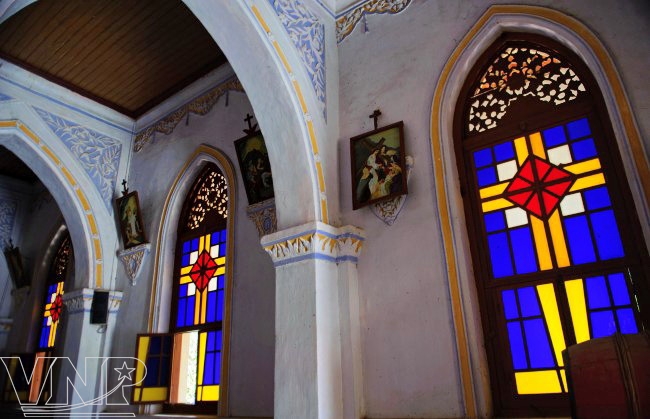
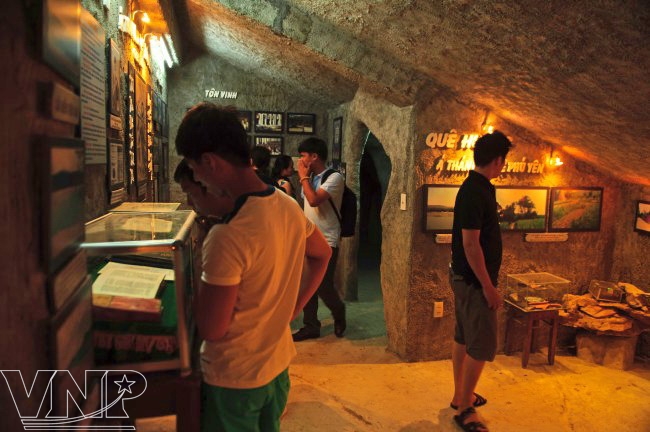










 Betsy ordered this interesting dish at Morning Glory...a shrimp coconut curry actually cooked in a young coconut. The sauce was slightly sweet and unbelievably flavorable.
Betsy ordered this interesting dish at Morning Glory...a shrimp coconut curry actually cooked in a young coconut. The sauce was slightly sweet and unbelievably flavorable. Congee for breakfast with a cup of coffee in the background. I love the little coffee filter so it can brew right at the table!
Congee for breakfast with a cup of coffee in the background. I love the little coffee filter so it can brew right at the table! "Pho", aka noodle soup, with a plate of fresh herbs and some fresh coconut water. You can't get much healthier than that!
"Pho", aka noodle soup, with a plate of fresh herbs and some fresh coconut water. You can't get much healthier than that! Eating my sweet green bean soup, served cold in a glass
Eating my sweet green bean soup, served cold in a glass






